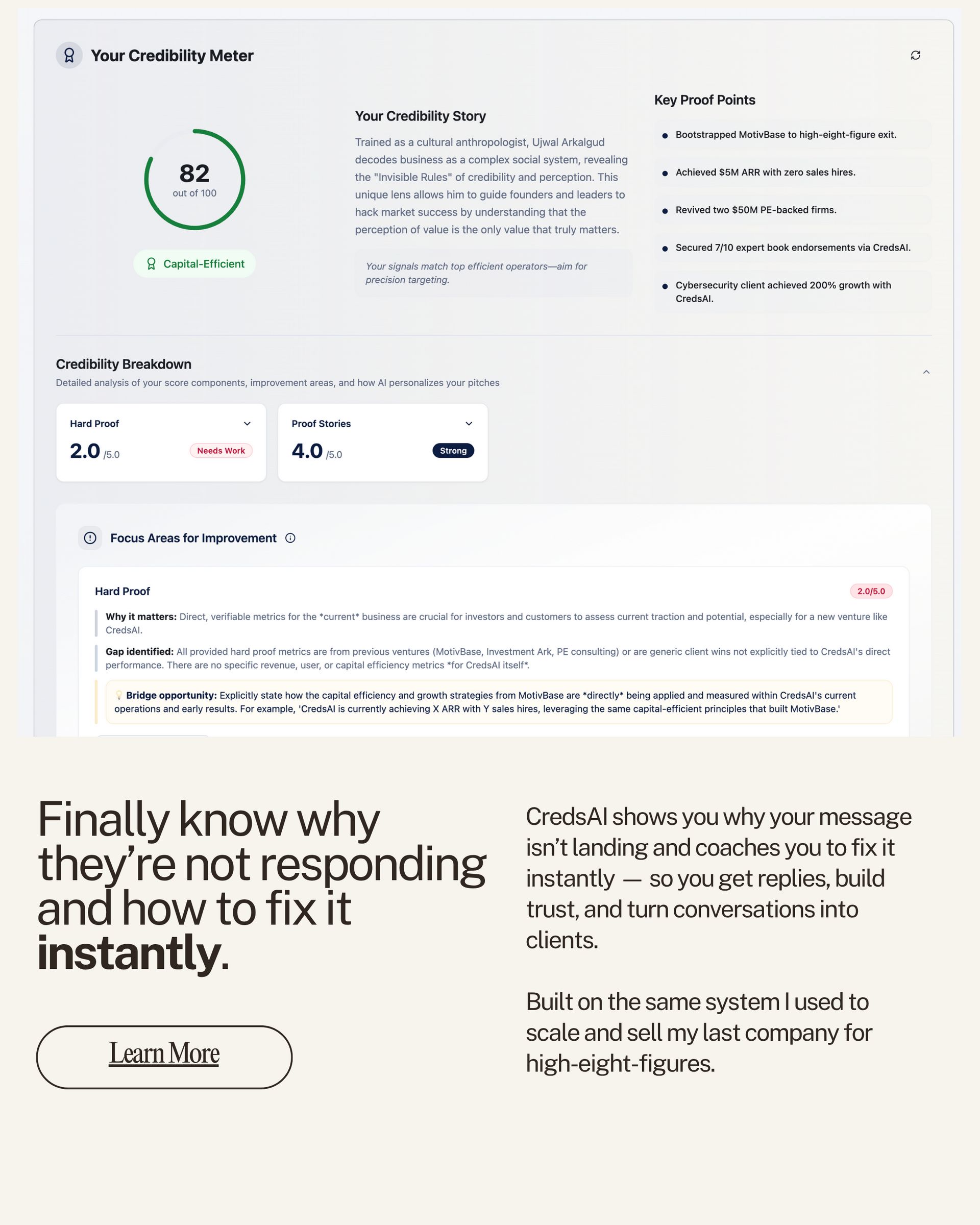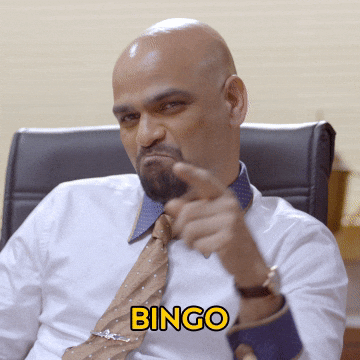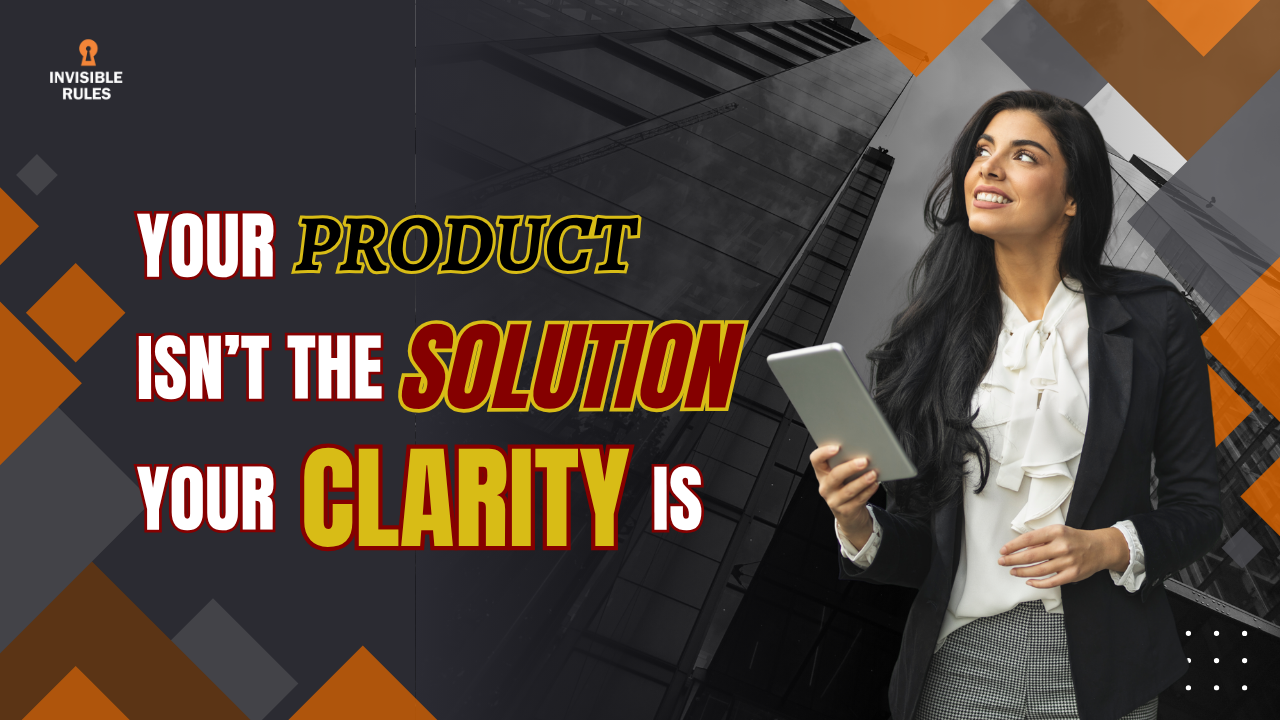- Invisible Rules
- Posts
- Struggling to Get Any Value Out of Networking at Conferences?
Struggling to Get Any Value Out of Networking at Conferences?
Here’s the script that helped us build an eight-figure-business just from conferences.
TLDR; Stop walking up to people at conferences and vomiting your elevator pitch. It’s desperate, it’s boring, and it signals you're a vendor, not a peer. The real pros engineer credibility first. They start with a counterintuitive insight about the other person's world, prove they're a thinker, and then wait for the magic words: "So, what is it that you do?". We're breaking down the exact script.
In this issue, we'll tackle:
A word-for-word script of the networking approach that gets you ghosted.
A new, counterintuitive script that flips the power dynamic instantly.
Deconstructing the "Credibility Drop" (and why it's not a resume).
The psychological trick to making busy VPs want to know what you do.
Let's dive right in.
The Networking Charade: A Play in Two Acts
The Scene: A loud, overpriced conference mixer. The appetizers are sad. The music is worse.
Our Target: Sarah, a VP of Sales Enablement at MegaCorp. She’s standing alone, looking bored and checking her phone, radiating "don't talk to me" energy.
ACT 1: THE TRADITIONAL (AND TERRIBLE) APPROACH
Enter "Bob," our eager founder. He’s been told networking is a numbers game. He approaches Sarah with a big, plastered-on smile.
Bob: Hi Sarah! I'm Bob, founder of SalesInsight. We use next-gen AI to optimize sales calls. I see you're at MegaCorp—are you the right person to talk to about boosting conversion rates?
Sarah: (Barely looking up from her phone) Uh, we already have three tools for that. Here's my card, have your team send me a one-pager.
Bob: Great! We're actually 20% faster and...
Sarah: "Gotta run. Nice meeting you."
Bob is left holding a useless business card. He failed because he led with his product, his company, and his needs. He was just another vendor, another blast of noise.
ACT 2: THE COUNTERINTUITIVE (AND WINNING) APPROACH
Enter "Anna," our protagonist. She's read the invisible rulebook. She knows Sarah isn't there to be pitched; she's there to find value.
Anna: (Approaches casually) Sarah? Hi. I saw your panel yesterday on sales enablement. Quick question for you, since you're so deep in this world.
Sarah: (Looks up, slightly intrigued by not being pitched) "Okay?"
Anna: You mentioned the huge push for 'data-driven coaching.' But I've been looking at that space, and it seems everyone's obsessed with keywords and 'talk-time ratios.' I'm starting to wonder if that's actually a trap."
Sarah: (Pauses. Eyebrow raise. This isn't the usual script.) A trap? How do you mean?
Anna: Well, all that quantitative data seems to miss the cultural context. A rep in Texas needs to build rapport completely differently than a rep in New York, right? Pushing a single 'keyword' script on both seems... risky. Is that something you're seeing at MegaCorp? This tension between standardized 'best practices' and real-world nuance?
Sarah: (Actually puts her phone in her pocket.) That's... interesting. We're actually having a hell of a time getting our EMEA team to adopt the new playbook. We just assumed it was a training issue.
Anna: It's almost never a training issue. It's often a cultural mismatch. For example, we've seen that in high-context cultures, reps who skip that early rapport-building get tagged as 'aggressive' by prospects, even if their AI-driven dashboard shows them hitting all the 'right' keywords. The AI sees a 'good call,' but the prospect feels alienated. It's a classic case of mistaking data correlation for human causation.
Sarah: (Nodding, now fully engaged.) Wow. You've clearly thought a lot about this. I haven't heard it framed that way before... So, what exactly is it that you do?
Anna: (Smiles.) My company helps with that. We built a platform that analyzes the cultural subtext of sales calls to help enablement teams like yours build playbooks that actually adapt to that nuance. I'm Anna, by the way. It’s nice to meet you.

Let's Put That Conversation Under the Microscope
Why did Anna win where Bob got shut down in 10 seconds?
Anna didn't "network." She engineered credibility.
She Started with Their World, Not Hers.
Bob started with "Hi, I'm Bob". Anna started with "I saw your panel". She immediately signaled she had done her homework and valued Sarah's expertise, not just her title. She wasn't there to take (a sale), but to give (an insight).She Led with a Counterintuitive Poke.
This is the most critical step. Anna didn't agree with the industry-standard "data-driven coaching" trend; she respectfully challenged it. By calling it a "trap," she deployed a Credibility Trigger. This leverages the curiosity gap: When you present information that runs contrary to a deeply held belief, people lean in. They are cognitively wired to want to know why their worldview might be wrong.She Dropped Credibility, Not a Resume.
Anna's "Credibility Statement" wasn't a list of her degrees or logos. It was the deeper layer of her counterintuitive insight ("It's often a cultural mismatch... we've seen that in high-context cultures..."). This detail did two things:It proved her counterintuitive opener wasn't just a wild guess; it was backed by deep research and expertise.
It signaled she was an "insider" who understood the game at a more profound level than the average vendor.
She Flipped the Power Dynamic.
Bob was a salesperson pitching. Anna was a strategist diagnosing. By focusing 100% on Sarah's world and offering a genuinely valuable perspective, Anna forced Sarah to re-evaluate her. The dynamic shifted from "VP talking to vendor" to "Peer talking to peer."She Waited for the Pull.
This is the secret. Anna never introduced herself or her company. She waited for the magic question: "So, what do you do?" By the time Sarah asked, she wasn't just being polite; she was genuinely curious and had already decided Anna was credible and worth listening to. Anna didn't have to push her pitch; Sarah pulled it from her.

Stop showing up to conferences with your elevator pitch polished. Nobody cares. Your pitch is a solution to a problem you haven't even earned the right to discuss.
Next time, leave your product at home and just bring your brain. Find the counterintuitive insight. Poke the accepted wisdom. Show them you understand their world better than they do.
The pitch can wait. Your credibility can't.
Provocative Question For You:
What's one counterintuitive, "that's actually a trap" belief in your industry that everyone else accepts as gospel?
Hit reply and tell me. I'm collecting heresies.



Reply